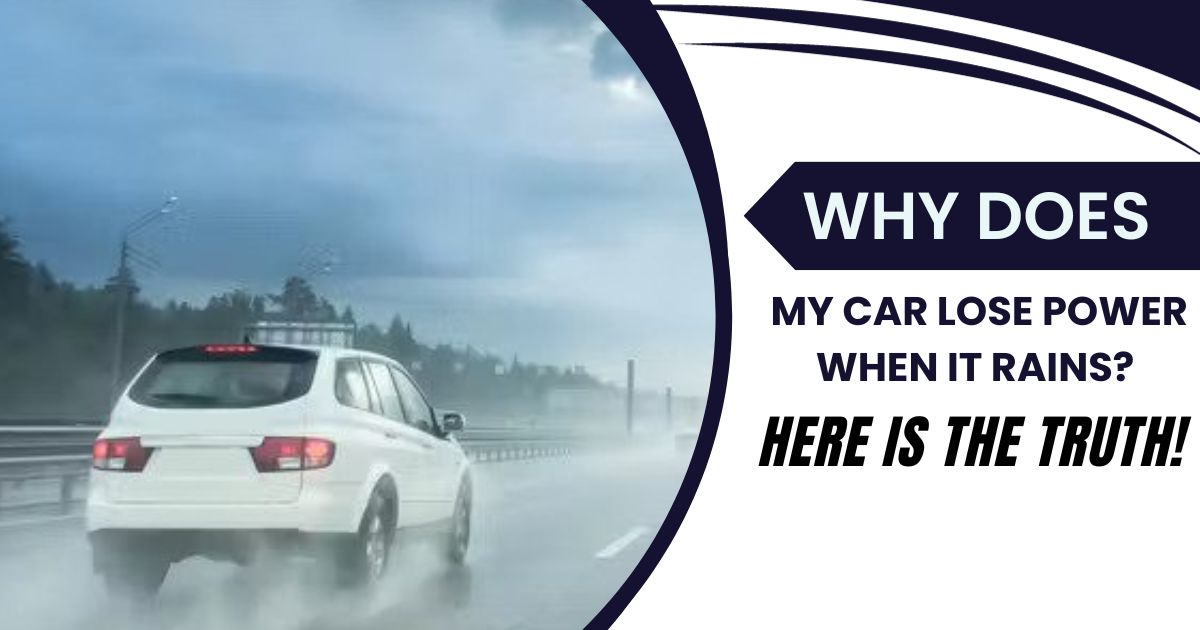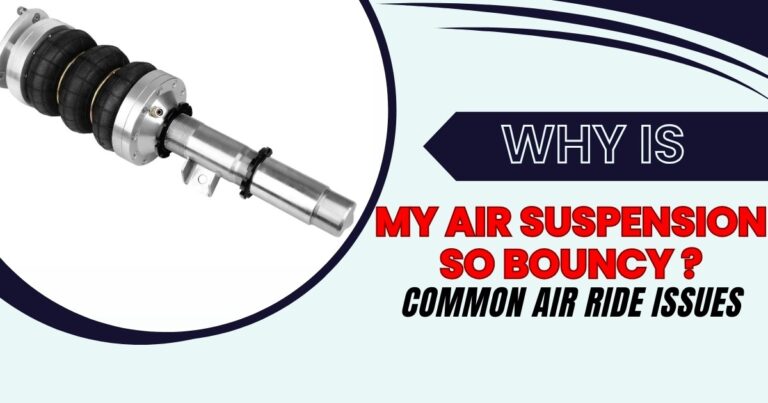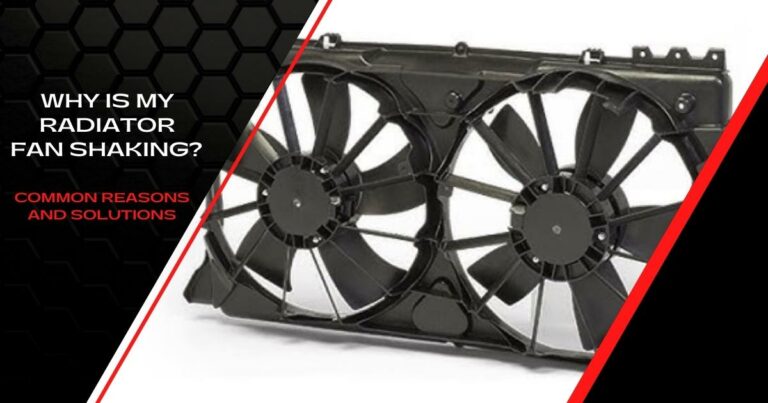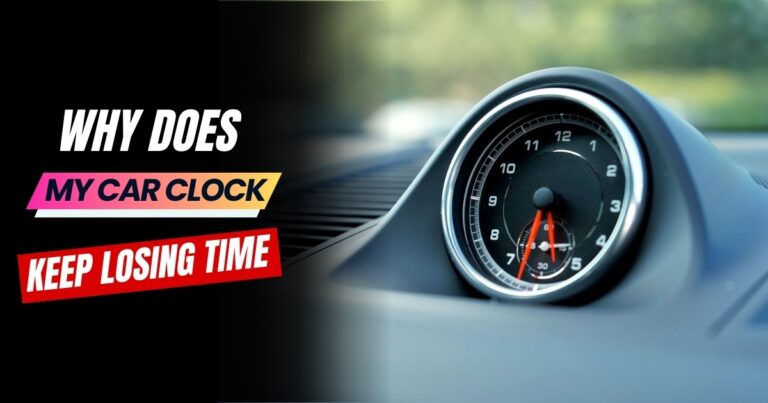Why Does My Car Lose Power When It Rains? Here is the Truth!
Rainy weather often brings cooler temperatures, which can be a relief especially when driving in hot and muggy summer months. Furthermore, rain can help prevent vehicles from overheating in extreme summer heat, and this reduces the risk of engine-related breakdowns.
However, for most drivers, driving under wet conditions often comes with a unique set of challenges. One common issue experienced by motorists during wet conditions is a noticeable loss of power and a decrease in the overall vehicle performance.
Some of the possible consequences of sudden loss of power are longer braking distances and overall diminished driving performance. Now, in order to drive safely and effectively, it’s essential to understand what causes car to lose power in wet weather and its remedies.

Why Does My Car Lose Power When It Rains?
Cars can experience a loss of power when it rains due to several reasons. As we have stated, loss of power can have a significant impact on a vehicle’s performance and driver safety. Some of the primary culprits for the unexpected power loss include;
Reduced Traction
Reduced traction between the tires and the wet road surface is one of the primary causes of power loss in rainy conditions. Rainwater on the road creates a slippery surface, and this can result in your tires losing grip. If your tires don’t grip the road effectively, it can lead to wheel spin, especially during acceleration. This, in turn, causes a decrease in power delivery to the wheels and, consequently, a loss of acceleration and overall power.
Moisture in the Air
The presence of moisture in the air during rainy weather can have a significant impact on the engine performance. As rain saturates the air, it often results in a reduction in the levels of oxygen that enter the engine.
A decrease in the available oxygen can, in turn, disrupt the air-to-fuel ratio leading to a less efficient combustion process. As a result, you’re likely to experience a noticeable reduction in power output from the engine.
The loss of power is especially pronounced in older vehicles equipped with carburetors. Old carbureted engines are more sensitive to changes in the air-fuel mixture and, therefore, tend to experience more power loss when there is a reduction of oxygen content in the incoming air.
On the other hand, modern vehicles come with advanced engine management systems designed to compensate for such changes and may exhibit a less dramatic reduction in power under similar driving conditions.
Electrical Issues
The vehicle’s electrical system is generally vulnerable to water when driving in wet conditions. If the seals and gaskets that protect sensitive electrical components are worn or become damaged, rainwater can find its way to critical components, such as spark plugs and ignition coils.
When this happens, it can interfere with the normal operation of the ignition system leading to issues such as misfires, rough engine performance, and loss of power. Luckily, most modern vehicles come with an advanced ignition system, which makes them less vulnerable to car electrical problems after rain.
Air Filter Saturation
Heavy rain can lead to the saturation of the air filter within the engine’s intake system. When the air filter becomes wet, it obstructs the flow of air to the engine, resulting in a power reduction. This issue is especially prevalent when driving in heavy rain or through standing water.
An air filter’s primary function is to filter out impurities and contaminants from the incoming air. This ensures that only clean and oxygen-rich air enters the engine for combustion. Now, when the filter becomes saturated with moisture, it hinders the passage of air, thereby affecting the air-fuel mixture.
As a consequence, the engine receives a reduced supply of air, which disrupts the precise air-to-fuel ratio required for optimal combustion. This disruption results in less efficient combustion, leading to an unexpected decrease in power output.
Hydroplaning
If you are driving in extremely wet conditions characterized by substantial water accumulation on the road, your vehicle becomes susceptible to hydroplaning. Hydroplaning occurs when a layer of water accumulates between the tires and the road surface, resulting in a loss of control and power. In such circumstances, the tires essentially lose contact with the road, leading to diminished traction and control.
Troubleshooting Car Power Loss When it Rains
When you encounter a broken-down vehicle or sudden loss of power when it is raining, the first thing you can do is to maintain control of the vehicle. Keep a steady grip on the steering wheel and avoid abrupt maneuvers.
If possible, try to guide your vehicle to the roadside before it comes to a complete stop. This helps to minimize traffic disruption and enhances safety. You may also want to activate your hazard warning lights to alert other drivers to your situation and encourage them to exercise caution. If the power loss is severe consider contacting roadside assistance or a mechanic to determine the way forward.
With that in mind, there are several steps you can take to address and prevent occasional power loss while driving in rainy weather. This includes;
- Inspect tire condition and tread depth – Start by inspecting the tires to ensure that they are in a good working condition. You may also want to ensure the tread depth is adequate to help disperse water from beneath the tires. In addition, ensure to regularly check your tires for signs of wear and replace them when the tread depth becomes too shallow to maintain safe and effective traction.
- Reduce speed to enhance safety- Driving at a reduced speed, particularly during heavy rain, is a key safety measure. It allows your tires to maintain better contact with the road, thus improving grip and control. In addition, driving slowly helps to minimize the risk of hydroplaning as well as facilitate more responsive braking.
- Regular maintenance- Ensuring proper maintenance of your vehicle is essential to prevent moisture-related issues. This includes inspecting key electrical components, such as spark plugs and ignition coils to ensure that they are working as expected. You may also want to ensure proper sealing to reduce the risk of water entering the system.
- Use of fuel additives- If you suspect moisture in the fuel system is affecting your engine’s performance, consider using appropriate fuel additives to help mitigate the issue. Fuel additives are designed to remove or displace water from the fuel, which helps improve combustion efficiency and power output.
- Park your vehicle indoors- It is a no-brainer that parking your car in a covered spot will shield it from the rain. If you have a garage, make it a habit to park your car inside. If you lack a suitable sheltered area, parking under a tree can offer some level of protection to your vehicle.
- Invest in a car cover- If you cannot find a sheltered parking spot, you might want to consider investing in a car cover. Car covers are often made from lightweight and waterproof materials, which provide an ideal and dry environment for your vehicle.
- Limit your driving to essential trips- Making short trips when it is raining might seem convenient at first, but doing so frequently can lead to quicker rusting and an increased risk of technical issues on the road. Whenever possible, consider walking or postponing your journey to minimize the impact of rainwater on your vehicle.
Conclusion
Most vehicles can withstand light showers now and then. However, bouts of heavy rains can make your vehicle lose power or damage its delicate components. As such, drivers need to exercise caution, especially in inclement weather. In addition, ensuring proper maintenance can go a long way in curbing the challenges posed by rain as well as safeguarding the well-being of both the vehicle and its occupants.






